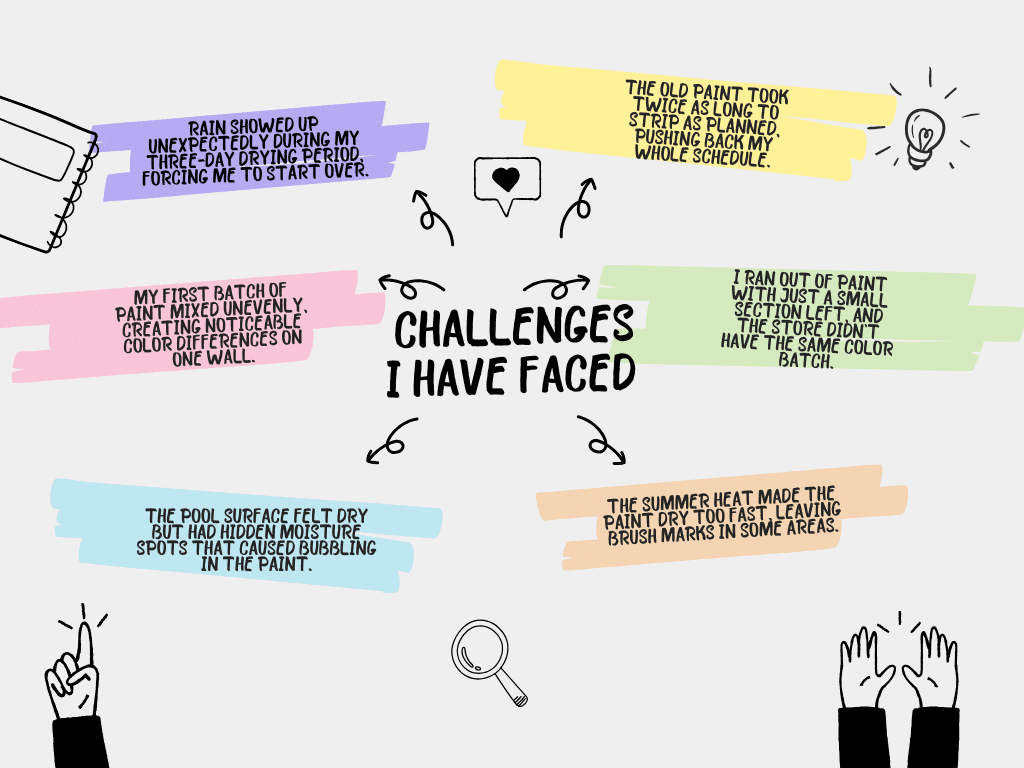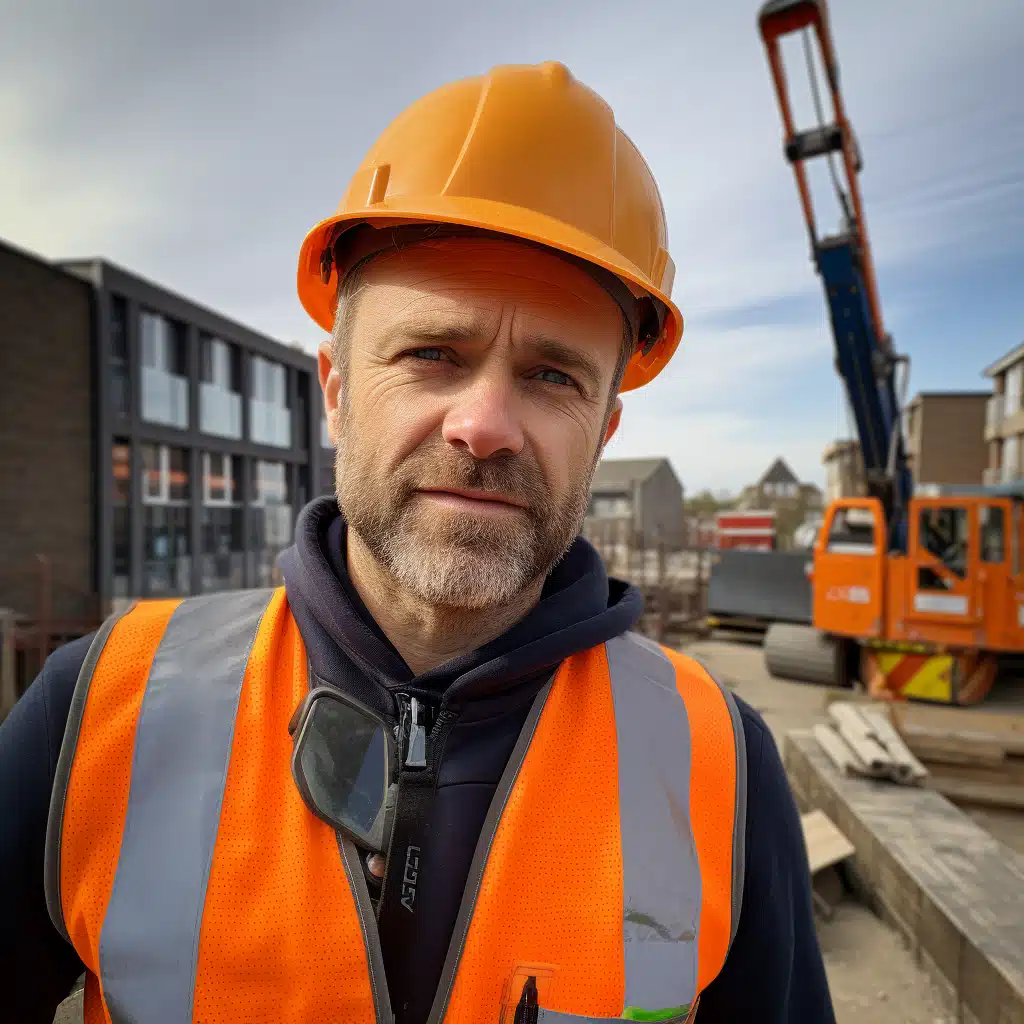Hey there! I know what you’re thinking – pool painting can be really expensive. I’ve been there too.
After getting several quotes from professionals that hurt my wallet, I found some smart ways to paint my pool without spending too much money.
I want to share my hands-on tips that helped me save over 50% on my pool painting project. Trust me, you don’t need fancy equipment or a huge budget to get good results.
In this guide, I’ll walk you through:
- Picking the right paint that won’t break the bank
- Getting your pool ready without special tools
- Simple painting techniques that work well
- Ways to make your paint job last longer
- Money-saving tricks I learned along the way
Let’s make your pool look fresh and clean together!
An Overview of Pool Paint Types

I’ve tried different pool paints over the years, and here’s what I learned about each type:
1. Epoxy Paint
- It costs a bit more upfront but lasts 7-8 years
- Works on concrete and fiberglass pools
- It takes 3-4 days to dry completely
- Gives a smooth, bright finish
2. Acrylic Paint
- Most budget-friendly option
- Dries quickly in about 2-3 days
- It only lasts 2-3 years
- Best for concrete pools only
3. Rubber-Based Paint
- Mid-range price point
- Good for 3-4 years
- Dries within 2-3 days
- It fits all pool surfaces
Tip: I found that, while pricier at first, epoxy paint saved me money in the long run. But if you’re on a tight budget right now, acrylic paint works just fine – you’ll need to redo it sooner.
Step-by-Step Guide to Painting Your Pool
Tools & Materials Required
| Category | Item |
|---|---|
| Surface Prep | Muriatic acid |
| Soda ash (for neutralizing acid) | |
| Safety Gear | Face mask |
| Rubber/latex gloves | |
| Long-sleeve shirt | |
| Tools | Mixing bucket |
| Stiff bristle hand brush | |
| Long-handled bristle broom | |
| Frog tape (2-pack) | |
| Painting | Pool primer (Leslie’s primer for bare concrete) |
| Smart Seal Dura Seal epoxy paint | |
| Paint catalyst (520c) | |
| Paint mixer attachment for power tool |
Step-by-Step Process
1. Surface Preparation
- Mix solution: 70% water, 30% muriatic acid in bucket
- Scrub pool surface with bristle brush/broom
- Apply acid wash to walls and floor
- Neutralize acid with soda ash
- Let the surface dry completely
2. Pre-Paint Setup
- Mask edges with Frog tape
- Fix any cracks or damage
- Repair tiles if needed
- Allow repairs to dry fully
3. Priming
- Apply primer to bare concrete
- Let the primer dry completely
- Check for a rough surface finish
4. Final Paint Application
- Mix epoxy paint with catalyst thoroughly
- Use the power tool with the mixer attachment
- Apply paint evenly
- Allow proper drying time
DOWNLOAD THE ENTIRE POOL PAINTING IDEA FROM THIS PDF
An Approximate Cost Breakdown for Painting
| Category | Item/Description | Cost Range |
|---|---|---|
| Basic Materials Cost | Pool paint (epoxy) | $115-130 per gallon |
| Primer | $45-60 per gallon | |
| Muriatic acid | $8-12 per gallon | |
| Soda ash | $10-15 per bag | |
| Frog tape (2-pack) | $15-20 | |
| Safety Equipment | Face mask | $10-15 |
| Rubber gloves | $5-10 | |
| Safety goggles | $8-12 | |
| Tools | Bristle brushes | $15-25 |
| Long-handled broom | $20-30 | |
| Paint mixer attachment | $10-15 | |
| Bucket | $5-8 | |
| Total Cost Range | Small pool (12×24) | $300-400 |
| Medium pool (15×30) | $500-600 | |
| Large pool (20×40) | $700-800 | |
| Money-Saving Tips | Borrow tools from friends | – |
| Buy materials during off-season sales. | – | |
| Share leftover supplies with neighbors. | – | |
| Use store-brand options for basic tools. | – | |
| Comparison | Cost comparison to professional painting services | $2,500-4,000 |
Is Pool Painting Right for You
1. Signs Pool Painting is a Good Choice
- Your pool’s surface looks dull but isn’t cracking
- You want to freshen up the look without major repairs
- Your budget won’t stretch for a full resurfacing job
- The existing paint is fading but not peeling badly
2. When to Skip Pool Painting
- Your pool has deep cracks or structural issues
- The surface is flaking off in large chunks
- You see bubbles under the current paint
- There’s more than three layers of old paint
Cost Comparison: I paid about $500-700 for a DIY paint job on my medium-sized pool. Compare that to professional resurfacing, which would have cost me $4,000-6,000.
Time Investment: You’ll need 4-5 days from start to finish. I spent two days prepping and cleaning, one-day painting, and waiting two days for it to dry.
Want to check if painting is right for your pool?
Run your hand along the surface – if it feels solid with just some fading, you’re likely a good candidate for painting.
Some Eco-Friendly Options I Have Tried & Tested

Let me share some Earth-friendly options I used when painting my pool.
1. Water-Based Pool Paints
- Low in harmful chemicals
- Fewer fumes during application
- Safe for local water systems
- Last 2-3 years on average
- Cost: $85-100 per gallon
2. Natural Cleaning Methods
- White vinegar mix for light stains
- Baking soda paste for scrubbing
- Natural brush scrapers instead of harsh chemicals
- Pure citrus cleaners for degreasing
3. Smart Water Management
- Collected rainwater for cleaning steps
- Used pool covers during prep to reduce water loss
- Saved and filtered wash water when possible
- Limited water waste during rinsing
4. Safe Disposal Tips
- Used local paint recycling centers
- Mixed leftover paint with cat litter to solidify
- Stored chemicals in original containers
- Found local hazardous waste drop-offs
Remember: Even eco-friendly products need careful handling. I always read labels and followed safety guidelines, just like with standard products.
What matters most is finding the right balance between being kind to nature and getting a good, lasting finish on your pool.
DIY vs. Hiring Professionals – Which is a Better Option
| Option | Pros | Cons |
|---|---|---|
| DIY Pool Painting | – Saves $2,000-3,000 on labor costs | – Takes 4-5 days of your time |
| – You control the work schedule | – Needs careful attention to safety steps | |
| – You can take extra time with prep work | – You handle warranty issues yourself | |
| – Learn useful skills for future maintenance | – Weather delays affect your schedule | |
| Hiring Professionals | – Job done in 2-3 days | – Costs $2,500-4,000 total |
| – They handle all materials and cleanup | – Need to work around their schedule | |
| – Work usually comes with a warranty | – Less control over materials used | |
| – Less chance of application mistakes | – Must research reliable contractors |
My Take
I chose DIY for my pool because I had time and wanted to save money. But if you’re busy or unsure about handling chemicals, professional help might be worth the extra cost.
Consider your time, skills, and budget when deciding.

Conclusion
I’ve learned that painting your pool doesn’t have to drain your savings or stress you out. After working on several pools and making plenty of mistakes along the way, I can tell you it’s totally doable on a budget.
Remember, good prep work is half the battle. Take your time cleaning, and don’t rush the drying process. Your wallet will thank you later!
If you found this guide helpful, check out my other pool maintenance guides:
- “Pool Care on a Budget: Monthly Tips”
- “DIY Pool Repairs That Save Money”
- “Winter Pool Care Without Breaking the Bank”
Got questions about your pool painting project? Drop them in the comments below. I’d love to share more tips and help you save money while getting that fresh pool look you want!
Frequently Asked Questions
What is the Best Type of Paint for My Pool?
Epoxy paint works best for most pools. It costs more upfront but lasts 7-8 years, resists chemicals well, and works on both concrete and fiberglass surfaces.
Is Painting My Pool a Good Long-Term Solution?
Pool painting works well if your surface is structurally sound. It’s not a fix for cracks or damage. Think of it as maintenance rather than repair.
Can You Paint Over Old Pool Paint?
Yes, but only if the old paint isn’t peeling or flaking. Test a small area first. You’ll need to match your new paint type to the old one.









Thanks for this! These are exactly the tips and experiences I was looking for before we start our first swimming pool project.
I may reach out with questions! like exactly what paint brands should I use especially if wanting to do a rainbow of colors?